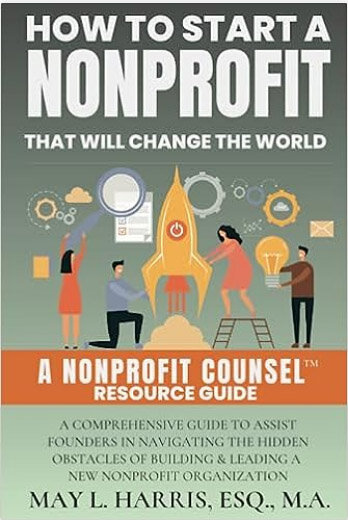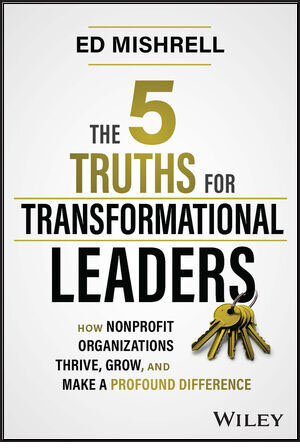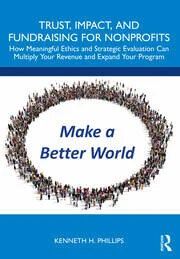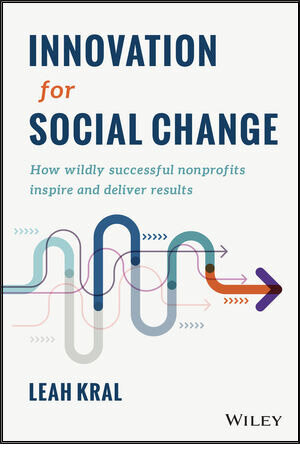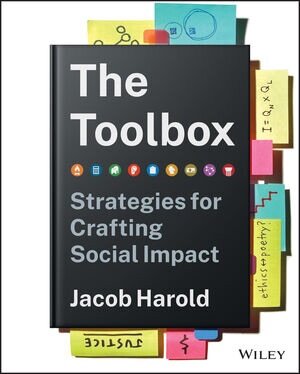How to Start a Nonprofit That Will Change the World
To quote C.S. Lewis, “the fact that you are giving money to charity does not mean that you need not try to found out whether that charity is a fraud or not.” In How to Start a Nonprofit That Will Change the World: A Comprehensive Guide to Assist Founders in Navigating the Hidden Obstacles of Building & Leading a New Nonprofit Organization, Mary L. Harris, an attorney specializing in nonprofits, helps donors do that by clearly delineating the steps from A to Z to set up a successful nonprofit. Sprinkled with such clever quotations, the book is a mini encyclopedia of the fundamentals of starting a nonprofit organization.
Harris, founding partner of For Purpose Law Group (FPLG) and founder of Nonprofit Counsel, outlines the steps in clear language that is accessible to the layperson. She presents the nitty gritty details, minutiae, nuts and bolts, and practical legal challenges in easy-to-understand, common-sense language and includes helpful tools such as downloadable templates.
Beginning with the basic building blocks, she focuses on the three main personality traits of nonprofit leaders. First, they need “preception,” the ability “to perceive something before it becomes visible.” Secondly, they have to be able to articulate their purpose and be good communicators. Thirdly, they have to be good delegators and assign tasks to others who have more expertise, so that these outside consultants “advise them in areas where they are not well versed” and help build up the nonprofit.
In the first section, Harris lays the foundations of legal liability, tax issues, etc.—the “primary obstacles that face you as you start a nonprofit organization, and the risks related to fundraising, governance, and the IRS.” She gives examples of successful nonprofit leaders, the main themes of which include “haste leads to failure” and “quality over quantity”— the importance of laying a strong foundation. Two such examples are Jordan Verdin’s Humanity Showers and Susan G. Komen Breast Cancer Foundation, which have “sustained financial support to focus on building a strong financial foundation…developing diversified funding base, investing in fundraising and donor retention strategies.”
First, they need “preception,” the ability “to perceive something before it becomes visible.” Secondly, they have to be able to articulate their purpose and be good communicators. Thirdly, they have to be good delegators and assign tasks to others who have more expertise....
Harris then provides a concise introduction to basic legal/tax issues and pitfalls to avoid. To be accorded tax-exempt status, the nonprofit must pass the Organizational test and the Operational test; they should not be “overly commercial in nature” or involve the use of activities, income, or assets for personal benefit of individuals close to the organization.” Throughout the book, Harris seems to warn against using quick and easy tax/legal shortcuts such as online websites, which may be cheaper but does not have the quality of an actual law firm such as the one she owns. Also discussed are charitable solicitation registration and fundraising in more than one state. As a fledgling nonprofit, it’s wise to know that most states adhere to the Charleston Principles, which require charitable organizations to register with a state agency before they can solicit donations from the public. In addition, it’s important to be aware that each state has its own unique set of tax/registration laws.
The next section highlights the duties and risks of being a nonprofit board member, such as fiduciary duties and the duties of care, inquiry, loyalty, obedience, etc. Harris goes into detail about the importance of each of these duties and how these concepts that go as far back as Confucius’ Analects “in acting on behalf of others, have I always been loyal to their interests.” She also advocates that “it’s crucially important to put in place financial policies and procedures manuals to set sound financial guidelines for the nonprofit that promote prudent fiscal management.”
The book also discusses navigating financials and evaluation risks, including the need for authenticity and transparency in fundraising: “[U]ltimately, raising money for a nonprofit may always be a challenge. But by focusing on communication impact, being strategic in how donors are approached, demonstrating transparency, and telling compelling stories, any nonprofit can increase its chances for success.” Harris closes the first section by going over the legal risks including employment related lawsuits, contract disputes, jurisdiction and choice of law, dispute resolutions, and indemnification.
Now that the reader understands the basic concepts of tax/regulatory and liabilities, in the second section, titled “Charting the Course,” Harris delves into the actual process of creating a nonprofit organization. Here she describes “the five areas of success that every new nonprofit founder should understand, Concept, Communication, Cash, Compliance and Culture.”
The book also discusses navigating financials and evaluation risks, including the need for authenticity and transparency in fundraising.
The Concept includes crafting a purpose statement and conducting a search of the nonprofit’s name, and “preemptively protecting your name by filing a federal trademark application. Another vital element is governance—the process, structures, and organizational traditions that determine how power is exercised within an organization, how stakeholders communicate both internally and externally. Within this framework she defines types of boards: governing, working, and advisory.
For Harris, a vital aspect of Communication is tax filings, given that “savvy nonprofit organizations utilize this required annual filing because...prior to donating to an organization, many individual donors will consult popular online services...to review an organization’s past returns to gauge how impactful their contributions will be.” Nonprofits should also put out a “call to action,” since “people are innately wired to wish to make a difference to others.” She also explains that there are legal ways to lobby and provides practical tax/legal advice such as the IRS measure of “subjective facts and circumstances test."
In her overview of Cash, Harris explains the two methods of accounting, cash-basis accounting and accrual-basis accounting. Also described are the “foundations for effectively tracking and reporting financial health, which is known as the Chart of Accounts (COA), broken down into 5 categories: assets, liabilities, net assets, income and expenses. She also covers budgets, revenue, and fundraising, with practical advice such as providing a written acknowledgement of donations.
In her review of Compliance, Harris provides helpful links to templates for following governance and maintaining tax-exempt status and permissible lobbying and political activity. She reviews the differences between an objective expenditure test, substantial activity, and facts and circumstances test which is the IRS default. There is also a brief section on data privacy, protection, and security. For example, organizations that handle medical data must adhere to the Health insurance Portability and Accountability Act (HIPPA) or the General Data Protection Regulation (GDPR) for European constituents..
The final chapters discuss Culture and topics on volunteers, employees, and professional vendors. Key recommendations include encouraging community-building efforts such as “invitations to appreciation breakfasts, educational seminars and small group coffee talks...which can evolve into building a small donor into lifelong supports and fans.”
As an outsider to the nonprofit world, this reviewer found Harris’s language easy and clear to understand, with quotations from various authors helping to illuminate the complex world of nonprofits. One note: the book sometimes seems like an advertisement for the author’s law firm, with shortcuts to templates that can be found on her website. Still, the templates provide tools that are quite helpful in giving both the novice and seasoned professionals access to both theoretical concepts and practical knowledge for day-to-day operations. In short, How to Start a Nonprofit That Will Change the World is an insightful primer for those seeking to start a nonprofit.
Anne Behk is a JD who works in healthcare administration.


